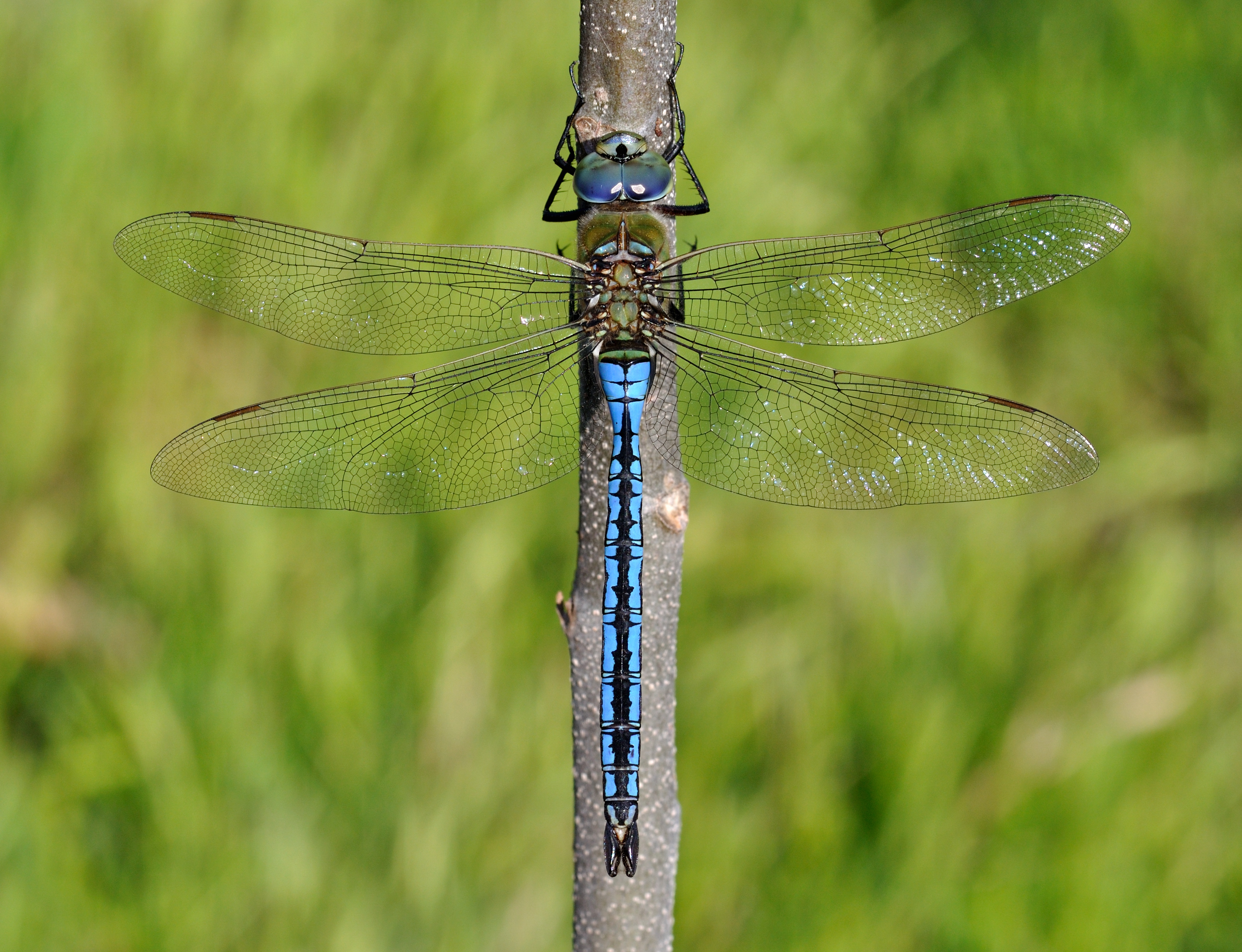A review of "Field Guide to the dragonflies of Britain and Europe" by Klaas Douwe B Dijkstra and Richard Lewington.
I was
somewhat surprised to learn that there are dragonfly-watchers (like bird-watchers,
but with their binoculars refocused). I assumed that different species of
dragonfly couldn't be told apart, except perhaps by a specialist under
microscope. Besides, I usually run when I see these large, sturdy insects, some
of which seem to be larger than a House Sparrow! Their somewhat smaller
cousins, the damselflies, don't appeal to me either.
In reality, it often *is* possible to identify dragonflies, although it probably takes more training (and guts) than identifying birds or butterflies. Dragonfly species can be told apart by their color, size, wing color, habitat or general behavior. Often, similar species occupy different, non-overlapping ranges. Occasionally, however, it is necessary to catch a dragonfly and take a closer look at its appendages to place it in the correct species (the appendages are used by dragonfly males to catch and hold the females).
This book is a field guide to the dragonflies and damselflies of Europe, northwest Africa (Morocco, Algeria, Tunisia) and western Turkey. The guide also covers the Canary Island, Azores, Madeira and Cyprus. Please note that Russia isn't included, while Belarus and the Ukraine are. About 160 species live in the area covered by the book, and they are all included. The illustrations are in color, and there are also color photos of many species. There are detailed range maps for every species, and descriptions to aid identification, including information on flight season, habitat and general habits. The guide also contains identification keys.
Perhaps most importantly, the guide also contains an extensive chapter on exactly where the dragonflies can be found. Of course, dragonflies can be found pretty much everywhere, but some places are better than others, especially if you want to find rare species, or as many different species as possible in one single location. Where should the avid dragonfly-watcher go if he or she visits Tunisia, Slovakia or Sweden? Apparently, my closest haunt would be Lake Mårdsjön north of Stockholm, where one can find 17 species of dragonfly and damselfly, including the Green Hawker, the Bog Hawker and the Arctic Bluet! (I will avoid that lake from now on.)
Recommended.
PS. Dragonflies and damselflies are, of course, harmless to humans...
;-)

No comments:
Post a Comment